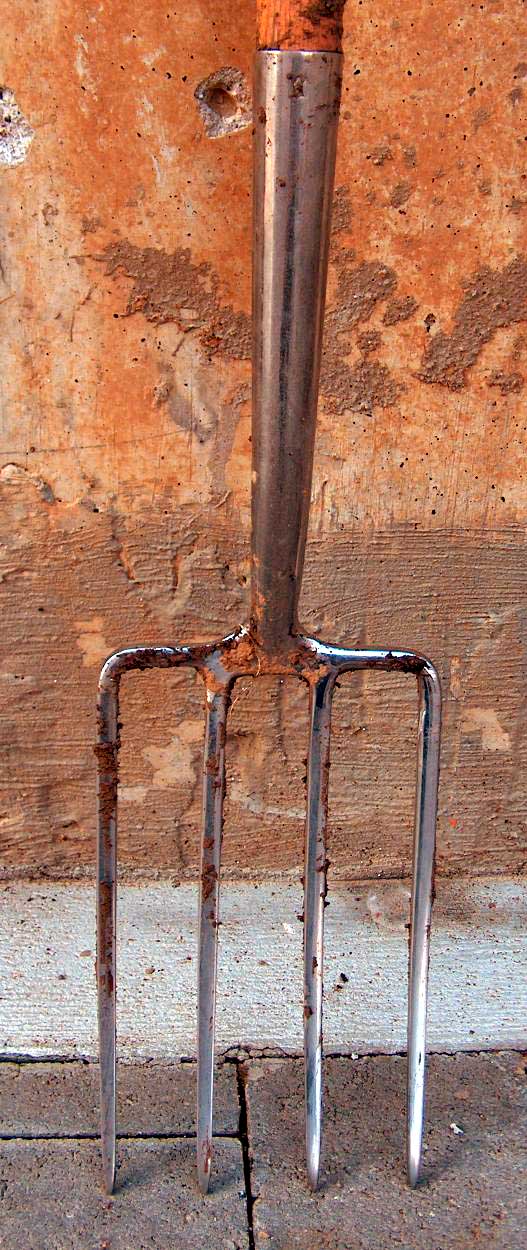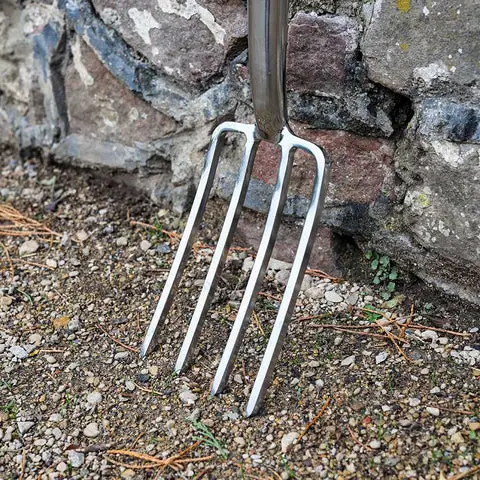A gardening fork is a tool used in gardening and farming. It has prongs, or tines, to break up soil and dig.
But what exactly is its meaning and purpose? Gardening forks come in various forms. They help with tasks like turning compost, aerating soil, and removing weeds. Unlike a shovel, a gardening fork can penetrate tough soil without much effort. This makes it a favorite among gardeners.
Whether you are a beginner or an expert, understanding this tool is key. It can make your gardening tasks easier and more efficient. So, what should you know about a gardening fork? Let’s dig deeper into its uses and benefits.

Credit: www.reddit.com
Introduction To Gardening Fork
Garden forks have been around for centuries. People used them for farming. They were made of wood and iron. Farmers needed strong tools for their land. Over time, designs improved. Today, garden forks are lighter and stronger. They help in turning soil and digging.
Garden forks are very important. They break up tough soil. This makes planting easier. Forks help mix compost into the soil. They make sure plants get good nutrients. Weeds can be removed with ease. Forks are also used for aerating the soil. This helps roots to grow better. Every gardener needs a good garden fork.

Credit: en.wikipedia.org
Types Of Gardening Forks
A digging fork is used to turn and loosen soil. It has strong tines to break up hard ground. This fork can also help remove rocks and weeds. Very handy for planting and harvesting.
A border fork is smaller than a digging fork. It is used in tight spaces. Great for working around plants and borders. This fork is lighter and easy to handle. Perfect for small gardens.
A compost fork is designed to move compost and mulch. It has wide and curved tines. This helps lift and turn loose materials. It makes spreading compost easier.
Materials Used
Steel tines are very strong. They do not bend easily. They work well in tough soil. You can use them for many years. They are rust-resistant too. This means they do not get damaged by water.
Wooden handles feel nice to hold. They are warm and natural. They give you a good grip. They can last long with proper care. They are made from hardwood like oak or ash.
Composite materials are a mix of things. They are lightweight yet strong. They are easy to clean. They do not break easily. They can be made to look nice too. Many tools now use these materials.
Choosing The Right Gardening Fork
A small garden needs a small fork. A large garden needs a larger fork. The right size will make your work easier. A small tool is good for tight spaces. A big tool helps with more ground.
Heavy soil needs a strong, sturdy fork. Light soil can use a lighter fork. The fork’s strength is important. Strong forks do not bend. Light forks are easier to handle.
Comfort is key. The handle should fit well in your hand. Some handles are soft. Others are hard. Choose the one that feels best. Your hands will thank you.
Proper Use Techniques
Hold the gardening fork with both hands. Your hands should be placed firmly but not too tight. Keep your thumbs pointing up. This helps in maintaining a steady grip. Use your fingers to wrap around the handle. This helps in controlling the fork. Do not let your hands slide. This can cause injuries. Adjust your grip if you feel discomfort. Comfort is key for long tasks.
Push the fork into the soil using your foot. Your foot should press on the fork’s step. This is the flat part near the tines. Use your body weight to push down. This makes digging easier. Lift the soil by pulling the handle back. This helps in turning the soil. Repeat this process in small sections. It ensures that all soil is turned.
Always wear gloves to protect your hands. Gloves prevent cuts and blisters. Ensure the fork is clean and rust-free. This prevents slipping. Do not leave the fork lying around. Someone might trip over it. Store the fork in a safe place after use. Keep it away from children. Always check the ground for hard objects. Hard objects can cause the fork to bounce back.
Maintaining Your Gardening Fork
Always clean your gardening fork after each use. Remove dirt and debris from the tines. Use a stiff brush to get rid of stuck-on soil. Dry the fork well to avoid rust.
Sharp tines work best. Use a file to sharpen them. Follow the original angle of the tines. Do this regularly to keep your fork effective.
Store your fork in a dry place. Hang it up to keep it off the ground. This prevents damage and rust. Consider using a tool rack for easy access.
Common Mistakes To Avoid
Many people use a gardening fork incorrectly. They might dig too deep or apply too much force. This can harm plants and soil. Using the fork gently helps prevent damage. Learning the correct technique is important for garden health.
Forgetting to clean and sharpen your fork can make it less effective. Dirt and rust can build up over time. Regular maintenance keeps the fork in good shape. A well-maintained tool lasts longer and works better.
Not all gardening forks are the same. Some are better for digging, while others are best for turning soil. Choosing the right fork for the task is important. Researching different types can help you make a better choice.

Credit: in.pinterest.com
Benefits Of Using A Gardening Fork
A gardening fork is a tool used to loosen soil, remove weeds, and turn compost. It helps make gardening tasks easier and more efficient. This tool is essential for maintaining healthy soil.
Frequently Asked Questions
What Is A Gardening Fork Used For?
A gardening fork is used for loosening soil, turning compost, and breaking up clumps. It’s an essential tool for gardeners.
How Does A Gardening Fork Help In Soil Aeration?
A gardening fork helps in soil aeration by breaking up compacted soil, allowing air, water, and nutrients to reach plant roots.
Is A Gardening Fork Necessary For Gardening?
Yes, a gardening fork is necessary for efficient soil cultivation, compost turning, and root aeration. It’s a versatile gardening tool.
Can Beginners Use A Gardening Fork Easily?
Yes, beginners can use a gardening fork easily. It’s a simple tool that requires basic gardening skills and provides great results.
Conclusion
A gardening fork is a must-have tool for every gardener. It helps break up soil, making planting easier. This tool also removes weeds and mixes compost efficiently. A gardening fork’s versatility makes it essential for garden care. Its simple design ensures ease of use for beginners and experts alike.
Investing in a quality gardening fork can significantly improve your gardening experience. Happy gardening!

My mission is to help you bring the beauty of nature indoors with expert advice, detailed plant care guides, and creative design ideas.





Leave a Reply